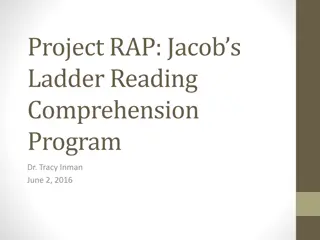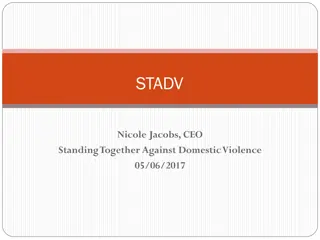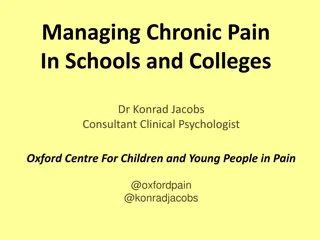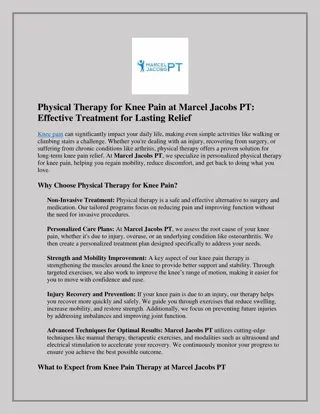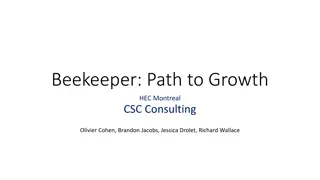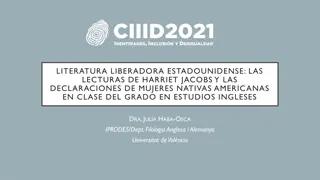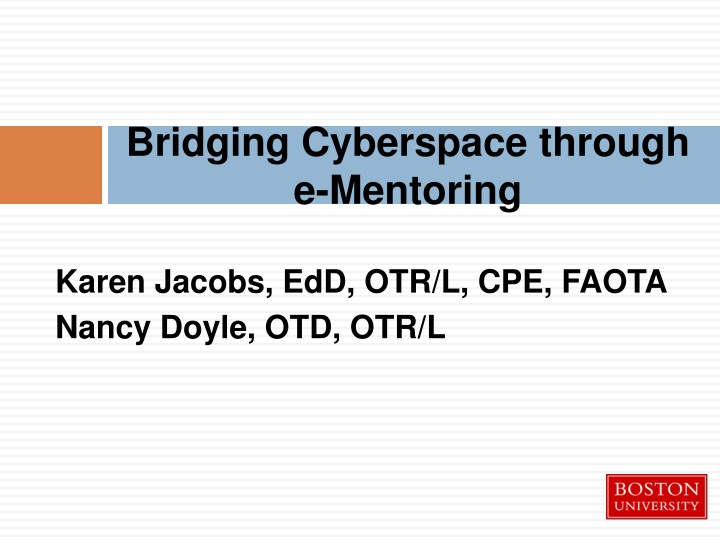
Exploring the Benefits of e-Mentoring in Occupational Therapy Programs
Discover the impact of e-mentoring in occupational therapy programs, including peer-peer and faculty-student relationships. Learn about electronic tools, evidence-based literature, and successful strategies for building a community of learners. Explore a case example of distance education post-professional doctoral program in OT incorporating e-mentoring.
Download Presentation

Please find below an Image/Link to download the presentation.
The content on the website is provided AS IS for your information and personal use only. It may not be sold, licensed, or shared on other websites without obtaining consent from the author. If you encounter any issues during the download, it is possible that the publisher has removed the file from their server.
You are allowed to download the files provided on this website for personal or commercial use, subject to the condition that they are used lawfully. All files are the property of their respective owners.
The content on the website is provided AS IS for your information and personal use only. It may not be sold, licensed, or shared on other websites without obtaining consent from the author.
E N D
Presentation Transcript
Bridging Cyberspace through e-Mentoring Karen Jacobs, EdD, OTR/L, CPE, FAOTA Nancy Doyle, OTD, OTR/L
Presentation Outline Overview: e-Mentoring in the OTD program Peer-peer mentoring Faculty-student mentoring Review of the evidence base literature Tools and strategies for e-mentoring Building a community of learners present and future through e-mentoring Faculty and student perspectives
Defining e-Mentoring Electronic mentoring (e-mentoring) is mentoring using computer-mediated technology such as electronic communication platforms (Adobe Connect, Wimba), e-mail, message boards, etc. to provide and receive guidance and support. Includes a variety of formats such as peer- peer and faculty-student
Case Example: e-Mentoring Distance education post-professional doctoral program in occupational therapy Two pairs formed at matriculation: Student-student peer mentoring Faculty-student mentoring Relationships sustained until graduation Mentoring agreements negotiated each semester
Review of the Evidence Literature Peer mentoring: Instrumental and psychosocial support Program satisfaction (Grant-Vallone & Ensher, 2000) Faculty mentoring: Professional development and identification Academic direction, skill-building Creative and independent thinking of mentees (Milner & Bossers, 2004; Webb et al., 2009)
e-Mentoring Evidence Base Promising alternative to in-person mentoring Success related to: Prior experience with internet use (DiRenzo, Linnehan, Shao, & Rosenberg, 2010) Motivation to be involved in mentoring (DiRenzo et al., 2010) Self-efficacy and task-efficacy for peer mentors: Frequency of e-mentoring interactions (DiRenzo et al., 2010) Limitations: Published research limited to written e-mentoring methodologies (DiRenzo et al., 2010; Smith-Jentsch, Scielzo, Yarbrough, & Rosopa, 2008)
e-Mentoring Tools Web camera and electronic communication platform
e-Mentoring Strategies Semester-long mentoring agreements Weekly face-to-face meetings Document reviews with specified deadlines
Building a Community of Learners Peer and faculty report high satisfaction Benefits for online students: Motivation, connection to the university, and commitment to one s academic and professional work Strong sense of community and support Potential for long-term professional relationships in clinical, research, and academic work
Student and Faculty Narratives Distance is not a barrier e-mentoring around the globe
Summary e-mentoring defined Program example Review of evidence base literature Recommendations for tools and strategies Outcomes: learning community and potential for long-term working relationships
References DiRenzo, M., Linnehan, F., Shao, P., & Rosenberg (2010). A moderated mediation model of e-mentoring. Journal of Vocational Behavior. 76, 292- 305. Grant-Vallone, E. J., & Ensher, E. A. (2000). Effects of peer mentoring on types of mentor support, program satisfaction and graduate student stress: A dyadic perspective. Journal of College Student Development, 41, 637- 642 Milner, T., & Bossers, A. (2004). Evaluation of the mentor-mentee relationship in an occupational therapy mentorship programme. Occupational Therapy International, 11, 96-111. Smith-Jentsch, K. A., Scielzo, S. A., Yarbrough, C. S., & Rosopa, P. J. (2008). A comparison of face-to-face and electronic peer-mentoring: Interactions with mentor gender. Journal of Vocational Behavior, 72,193 206 Webb, A. K., Wangmo, T., Ewen, H. H., Teaster, P. B., & Hatch, L. R. (2009). Peer and faculty mentoring for students pursuing a PhD in gerontology. Educational Gerontology, 35, 1089 -1106.






